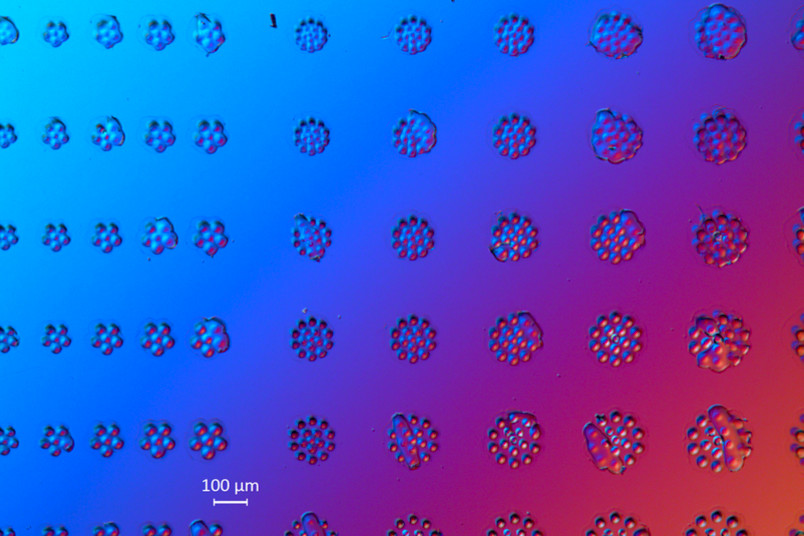| Jan 16, 2023 |
|
(Nanowerk News) When searching for catalysts for the energy transition, materials consisting of at least five elements are considered highly promising. But there are theoretically millions of them – how do we identify the most powerful one? A Bochum-based research team led by Professor Alfred Ludwig, head of the Materials Discovery and Interfaces Department (MDI), has succeeded in placing all possible combinations of five elements on a carrier in a single step.
|
|
In addition, the researchers developed a method to analyse the electrocatalytic potential of each of the combinations in this micromaterial library in high throughput. This is how they hope to speed up the search for potential catalysts by a considerable degree.
|
 |
| Under the light microscope, the results of the sputtering process are visible. (Image: Lars Banko)
|
|
The team from Ruhr University Bochum published its findings in the journal Advanced Materials (“Microscale combinatorial libraries for the discovery of high-entropy materials”).
|
A complete five-element material system on a single carrier
|
|
For the production of material libraries of so-called high entropy alloys, the Bochum researchers employ a sputtering process. In this process, all of the starting materials are simultaneously applied to a carrier from different directions. The starting materials are deposited in different mixing ratios on each part of the carrier.
|
|
“In the current project, we’ve refined this process by using pinholes in such a way that each material mixture is only deposited in a tiny spot of about 100 micrometres in diameter on the carrier,” describes Alfred Ludwig.
|
|
This is roughly equivalent to the diameter of a human hair.
|
|
“By miniaturising the material libraries, we are now able to accommodate a complete five-component system on a single carrier – this constitutes immense progress,” adds Dr. Lars Banko from the MDI Department, who recently became head of the EXIST-funded start-up project xemX.
|
 |
| Within each collection of points is a single micro-library – each of which contains a compositional variation. (Image: Lars Banko)
|
Research with hanging drops
|
|
To study the materials created with this technique, the researchers use what is known as scanning electrochemical cell microscopy (SECCM). This involves measuring the electrochemical properties of the material at a specific point via a hanging nanodroplet of an electrolyte measuring one thousandth the diameter of a hair. “This means we can use high-throughput methods to pinpoint the candidates with the highest catalytic activity, where a more detailed analysis seems worthwhile,” says Professor Wolfgang Schuhmann, head of the Department of Analytical Chemistry at Ruhr University Bochum.
|
|
Using these methods, the researchers are hoping to efficiently search through the plethora of possible materials for new catalysts in order to identify candidates that are particularly active as catalysts. Catalysts are needed, for example, for energy conversion processes that could enable us to use green hydrogen on a large scale as an environmentally friendly energy carrier.
|



